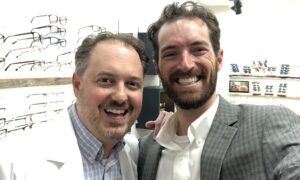By Dave Anderson, OD
April 20, 2016
In recent years, optometric alliances have grown from being basically buying groups for independent ODs to being full-service organizations that offera host of services in education and business management.We have athree-OD practice with19 support staff, and our participation with optometric alliances (we belong to three) has been critical part of our growth plan.
For the past right years, we have taken advantage of the cost of goods savings from one alliance.Recently, a local lab has offered additional savings on top of the current vendor programs, so we added this savings. We are also involved in the third group specifically for the practice management guidance. All told, our memberships, which cost us less than $5,000 a year, save us $50,000on cost of goods alone.
Compare Options
Years back, we were approached by one buying group offering to help us save on cost of goods. This caused me to look at our cost of goods, and compare them to the national benchmarks. We were spending nearly 35 percent on goods (the MBA average for COG is 29 percent).On closer examination, we were using too many vendors for frame and lenses, and using too many labs. After collecting data from our practice about the lenses we most often prescribe, labs that were most in line with our products and included great customer service, we lined up all the existing groups to compare. We looked at the cost, cost savings and how much we would need to change our practice to best utilize the program savings. Analyzing these factors allowed us to quickly see which alliance would work best for us.
My partners and I all agreed on the final decision of which alliances to join, as our contact lens and glasses prescribing habits were already fairly closely aligned. I could see a big challenge in a practice where the doctors have different preferred progressive lenses, frame companies and contacts for their patients. In our office, these were all similar, so the savings for each doctor was similar.
Membership renews, but most all buying groups are minimal commitment, allowing the doctors to back out if the expectations are not being met after a very short period. Some alliances cover the whole practice, some are per doctor and some add additional fees for additional locations. Most, however, are for the whole practice.
For all three combined alliances, we pay less than $400 a month. We save over $50,000 a year based on the cost savings, but also received rebates on top of the savings. We try to align ourselves with the most advantageous labs, frames and contact lenses as long as they are appropriate for our patients.
The frames we purchase all have a minimum discount of 20 percent as a result of our alliances. We are given rebates from contact lens manufacturers of nearly $500 a quarter. When we have purchased computers, we received discounts of over 25 percent. We recently purchased the Optos Daytona and received a discount of over $1,000 with deferred payment options. When using specific ophthalmic labs, our discounts have been over 30 percent consistently
Optimize Cost Savings
We take advantage of many areas offered in the vendor program list each year. In fact, the best part about an alliance and buying group is that the understanding of all the various practice needs go far beyond ophthalmic lens lab savings. We have used credit card processing, electronic record monthly access savings, contacts lenses, frame purchases, nutraceuticals, computer equipment, frame board updates, and other equipment. In fact, every time we are looking to purchase something, whether it is printer paper, or bring in a frame vendor, we always check with the vendor programs that already exist to make sure we are saving the most we possibly can.
Take Advantage of OD Educational Opportunities
Each quarter, my partner and I host a study group meeting covering business aspects of our practices. We cover various areas like staffing, frame board management, benchmarking and managed care challenges. We find that we learn as much from all the practices around as we help them learn, and each quarter a new topic generates many new ideas.
I have also attended regional conferences and national conferences. Each time I attend one of these, I come back to the office afterwards with plans to make seveal changes immediately to help my practice. We added scribes in our practice within one week after a meeting several years ago, we added a new revenue stream with better focused care on dry eye and macular degeneration, and changed some of the buying practices for our frame board.
Bring Educational Materials Into Office
We get point-of-sale information from the buying groups related to the products we sell in our office. We use information to help educate about blue light damage, no-glare lenses, photochromatic lenses, all provided by the vendor. One of the advantages of being involved in the buying group is the vendor always has reps in our office giving us the newest information and helping provide solutions to common problems. These vendors know we are committed to the alliance, and that we understand the business aspect of our practice, and they always want to keep us informed of the best options they have for us.
Dave Anderson, OD, is a partner withMiamisburg Vision Care in Miamisburg, Ohio. To contact: doca@burgvision.com



























